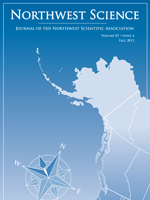In the past several years, a fungal epidemic has devastated hibernating bat populations in eastern North America, with an estimated loss of 5.7 to 6.7 million bats as of January 2012. The potential for the disease to spread to bat populations in the western states and Canadian provinces remains unknown, but is cause for significant concern. This wildlife health crisis has been dubbed white-nose syndrome (WNS), for the distinctive white fungal growth that appears on the muzzles, ears, and wing membranes of affected bats. This fungus, the recently named species Geomyces destructans, has been determined to be the causal agent of WNS. However, relatively little is currently known about the ecology of this organism, its potential for invasiveness in the Northwest, and about how disease spreads within and between bat populations. Our purpose here is to summarize current epidemiological knowledge about WNS, in an ecological context relevant to efforts to understand the epidemic and predict its potential to spread to western bat populations. Because of strong similarities between WNS and some invasive fungal diseases of crops and forests, our approach is to incorporate epidemiological perspectives borrowed from the field of plant pathology as well as from wildlife pathology. We highlight research needs that will help to understand, predict, and manage this devastating wildlife disease.
How to translate text using browser tools
1 September 2013
Potential Spread of White-Nose Syndrome of Bats to the Northwest: Epidemiological Considerations
Guy R. Knudsen,
Rita D. Dixon,
Sybill K. Amelon
ACCESS THE FULL ARTICLE

Northwest Science
Vol. 87 • No. 4
September 2013
Vol. 87 • No. 4
September 2013
Bat
invasive pathogens
wildlife disease




